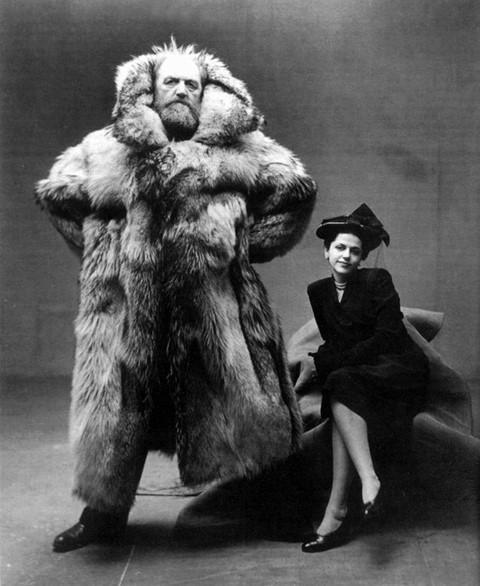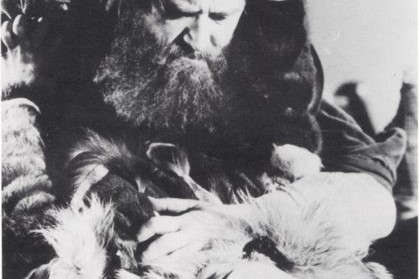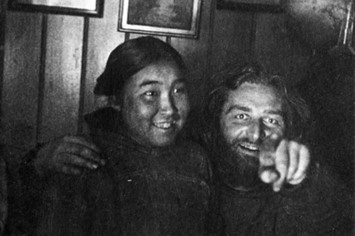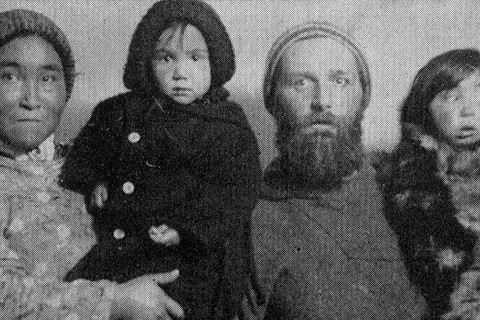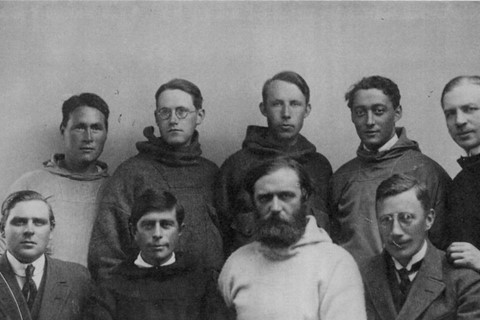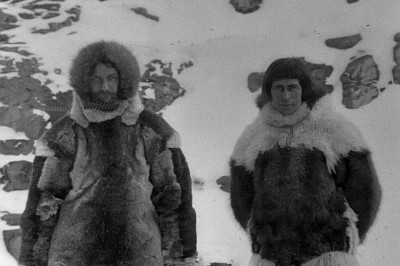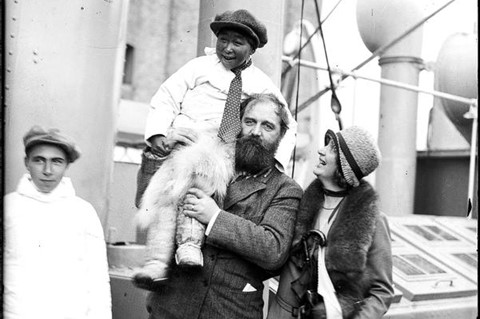To mark the birthday of intrepid arctic explorer Peter Freuchen, AnOther delves into the past of this formidable and fascinating man
Who? In a portrait by Irving Penn, Peter Freuchen wears a vast coat, made from the fur of a polar bear, which only serves to emphasise his not undaunting 6’7” frame. Freuchen stands beside his third wife, Dagmar Cohn, whom he married in 1945. But the beguiling portrait only hints at the surprising life of Peter Freuchen – a deeper look reveals his staggering biography.
What? Freuchen was a Danish arctic explorer, anthropologist, actor and author. After studying to be a doctor at university, Freuchen participated in several arctic explorations, the first being in 1906 when he was only 20, in which, after sailing as far north as possible, a further 7,000 miles were travelled via dogsled. It was here that Freuchen discovered Inuit culture, and for over two generations he lived, hunted and travelled with the Inuit. In 1911, Freuchen married his first wife, an Inuit woman called Navarana Mequpaluk. Navarana bore him two children, a boy named Mequsaq Avataq Igimaqssusuktoranguapaluk and a girl called Pipaluk Jette Tukuminguaq Kasaluk Palika Hager. When she died in the Spanish Flu epidemic in 1921, the local Christian church refused to allow her burial, and so Freuchen buried her himself.
“In 1956, Freuchen answered the $64,000 question of the American TV-show The $64,000 Question”
Freuchen wrote over 30 books, most famously the Book of the Eskimos, published posthumously in 1961. An autobiographical work, it described the Inuit culture Freuchen had lived within, and detailed how, in 1926, he lost a leg to frostbite, amputating several gangrenous toes himself. Off the back of his literary success, Freuchen became the head of a film company specialising in Arctic-related scripts. In 1933, he starred as the villainous character in the film Eskimo, which went on to win an Oscar.
In the 1920s Freuchen returned to Denmark and joined the Social Democrats. During the Second World War he was involved in the Danish resistance against Germany, aiding refugees from the Nazis. Himself a Jew, he was imprisoned and sentenced to death by the Nazis but escaped to Sweden.
Why? In 1924, Freuchen married Magdalene Vang Lauridsen, a margarine heiress, but their 20 year marriage collapsed in 1944. A year later, he met Dagmar Cohn. Cohn was a fashion illustrator, whose work made it onto the April 1947 cover of Vogue, introducing Christian Dior. As if his life couldn’t be more surprising, in 1956, Freuchen answered the $64,000 question of the American TV-show The $64,000 Question. The next year he was awarded the Gold Medal of the International Benjamin Franklin Society for his “service to mankind in opening new frontiers.” He lived with Cohn until he died of a heart attack in 1957.
